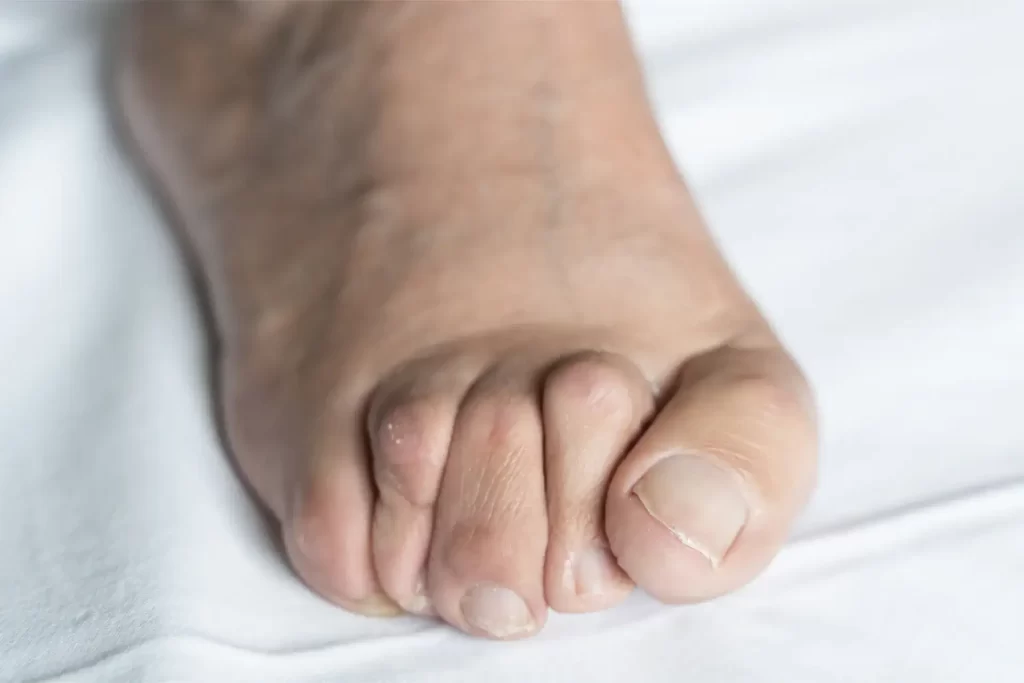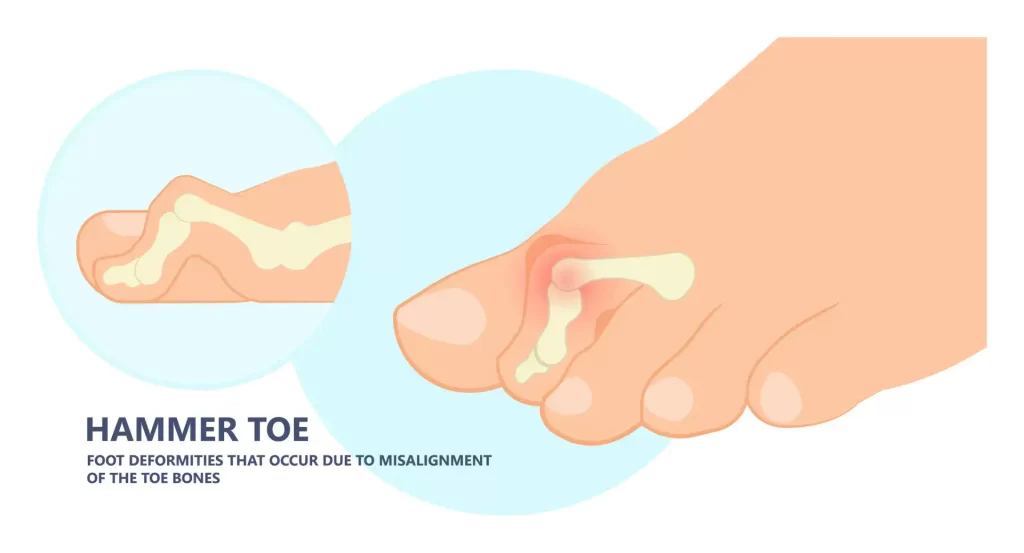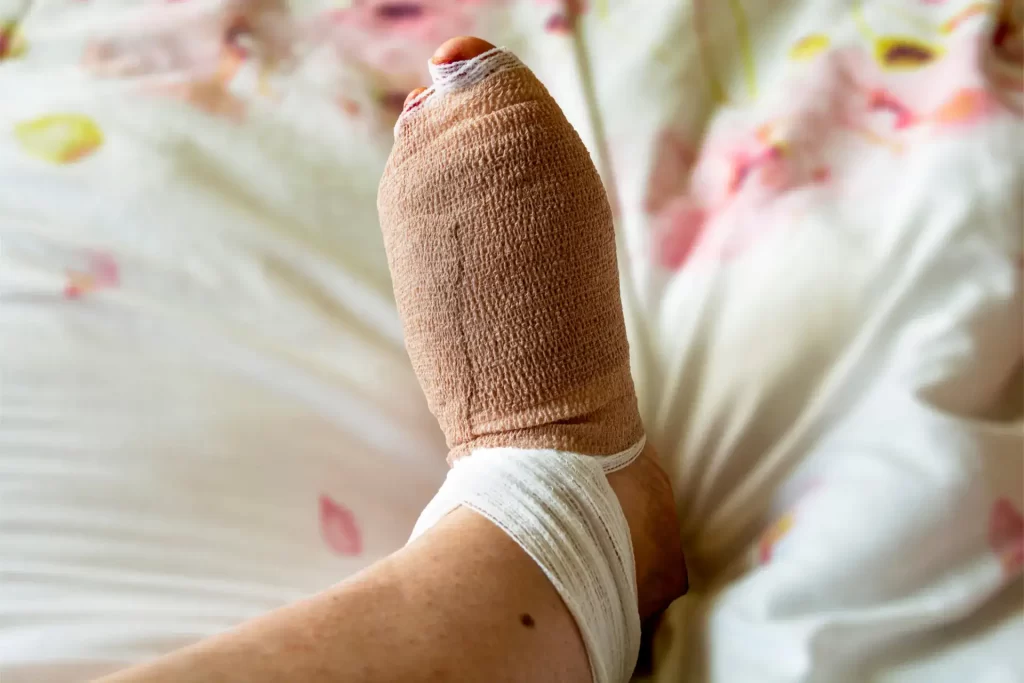Hammertoe is a prevalent foot deformity that can be a source of significant discomfort and ultimately cause mobility issues. This condition is characterized by an abnormal bend in the middle joint of one or more toes, which curves the affected toe into a hammer-like or claw-like shape. Although often associated with aesthetic concerns, the effects of hammertoe extend far beyond appearance and can affect quality of life.

What causes hammertoe?
The onset of hammertoe typically stems from an imbalance in the toe’s muscular and tendinous structures, which can be caused by a variety of factors. People with long toes and genetically predisposed individuals may be more prone to developing this condition, particularly if it runs in the family. Various forms of arthritis can also contribute to joint deformities, making hammertoe a potential complication for people who suffer from rheumatoid and other types of arthritis. Diabetes can also increase the risk of foot issues like hammertoe.
One of the most common causes of hammertoe, however, is the prolonged wearing of poorly fitted footwear. Shoes that lack adequate room for the toes, high-heeled shoes, or any footwear that crowds the toes can amplify the risk of developing a hammertoe or bunion. This is because unnatural toe positions, often due to constrictive shoes, can lead to a gradual deformation of the toe joints over time.
Hammertoe Symptoms

The symptoms associated with hammertoe are diverse, and while they aren’t associated with common sports injuries, they share the disruptive nature of such ailments. Hammertoe symptoms range from visible deformity, corns, and calluses – usually caused by the toe rubbing against the shoe – to significant pain and limited toe movement.
Additionally, hammertoe can lead to a set of symptoms that complicate athletic activities, such as challenges with balance and gait. These difficulties underscore the importance of professional assessment and intervention, particularly for those active in sports where foot health is paramount.
Claw Toe vs. Hammertoe: Understanding the Difference
While there are similarities between claw toe and hammertoe — chiefly the pronounced curvature of the toes — they are distinct conditions. Claw toe typically affects all the toe joints and results in a claw-like appearance, whereas hammertoe primarily affects the second, third, or fourth toes and is localized to the middle joint. Recognizing these differences is key to ensuring a correct diagnosis and treatment plan.
Navigating Hammertoe Treatment
If you’re wondering how to fix hammertoe at home, there are numerous nonsurgical treatment methods that can help alleviate the discomfort of living with hammertoe. If your condition is severe or if nonsurgical options fail to adequately address your pain, different types of foot surgeries can help correct this condition and its root causes.
Hammertoe Shoes
Wearing shoes specifically designed to accommodate and relieve pressure from hammertoes can be a straightforward and effective treatment. These shoes often feature a deep toe box that prevents further bending and friction.
Hammertoe Corrector and Hammertoe Straightener
These devices hold the toe in a straighter position, counteracting the tendency to bend. With consistent use, correctors and straighteners can help straighten the toe, reduce pain, and improve the toe’s appearance.
Shoe Inserts
Custom orthotics can be a game-changer, providing tailored support that distributes pressure more evenly across the foot, thus mitigating the symptoms of hammertoe.
Rehabilitative Exercises
A series of targeted exercises can strengthen the toe muscles, enhance flexibility, and slow the progression of the condition.
In situations where these conservative measures do not provide sufficient relief or if the hammertoe has become rigid, a patient might be directed toward surgical intervention, such as bunion surgery, which can address related deformities and contribute to improved foot function and comfort. In more severe cases, hammertoe surgery may be required.
Hammertoe Deformity Surgery
Hammertoe deformity surgery encompasses various surgical techniques depending on the severity of the condition. These surgical procedures include tendon transfer, joint resection, and complete joint fusion (arthrodesis), all of which aim to realign the affected toe, alleviate pain, and improve overall foot function.
Is hammertoe surgery worth it?
For individuals struggling with persistent pain or functional impairment due to hammertoe, surgery can offer substantial relief and is often considered a worthwhile intervention. As with any surgical procedure, it’s essential to weigh the potential benefits and risks with a foot and ankle specialist.

Post-Surgery Care: Ensuring a Successful Recovery
Following hammertoe surgery, a patient can expect a recovery period during which the toe heals and gradually regains strength. This phase is marked by diligent post-operative care, including wearing specialized footwear to protect the toe, managing inflammation with cold therapy, and restricting activity as advised by the surgeon. Physical therapy may also be recommended to restore function and mobility.
At Rocky Mountain Foot & Ankle, our commitment to patient-centered care ensures you receive personalized and advanced treatment options to help you walk comfortably and confidently. Trust our experienced team to guide you through the process of correcting hammertoe and restoring the health and function of your feet.